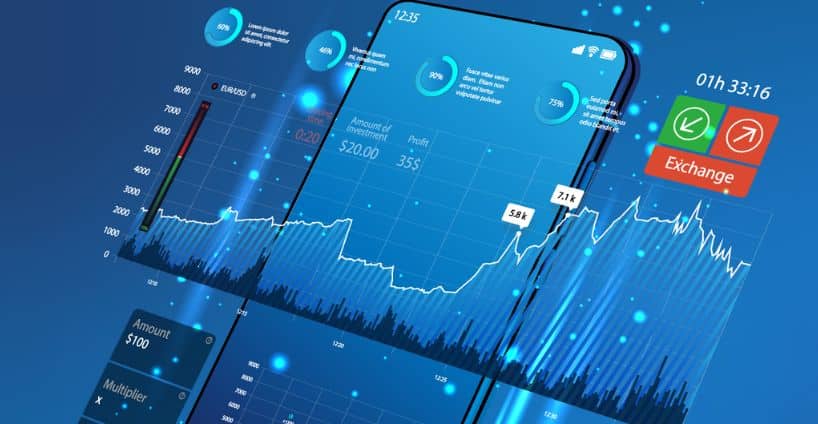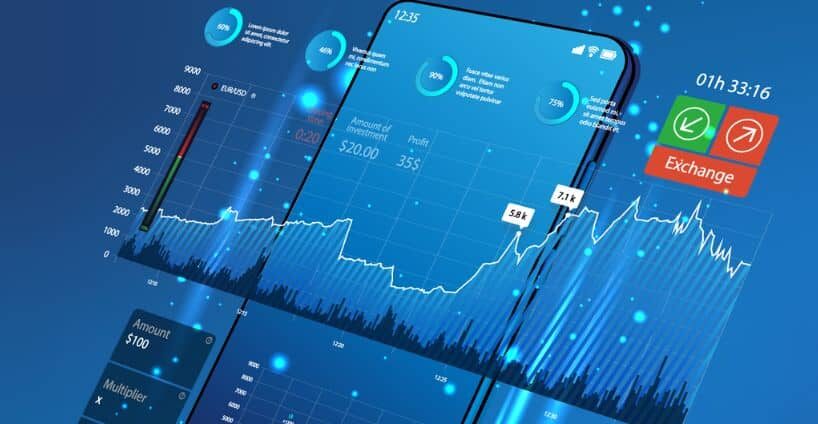How significant are technical tools in Indian forex trading?

One of the most popular tradings in India is Forex trading, where businesses and individuals are involved. In this market, traders must hedge against market fluctuations and diversify their investment portfolio to reap benefits. One should have deep knowledge, stay updated on the latest market trends and understand the forex market to trade successfully. For forex trading in India, traders need to know about technical indicators and tools for identifying patterns, when to enter and exit trades, market fluctuations, and more.
Before proceeding with forex trading, traders must explore technical tools used in forex trading in India and when to open and exit trades. They should also know how to employ these tools and integrate them into their trading strategy. This article will explain what technical analysis in forex trading means, what specialized tools are used for price analysis and risk management, and the limitations of technical study in forex trading.
Understanding Technical Analysis in Forex Trading
Technical analysis can analyze the financial market’s historical price data and volume, thereby identifying trends, patterns, and prospective price movements. In forex trading, technical analysis is used by traders to predict the future price of any currency pair based on its past price data.
Benefits of using Technical Analysis Tools in Forex Trading
- Technical analysis has profound use in forex trading, and traders use it to make informed trading decisions, providing them with knowledge about market volatility and its patterns.
- The best forex broker in India provides tools for technical analysis that helps analysts to evaluate volume data and price and identify trends and patterns for predicting the future price of a currency. These tools benefit the forex market, which is prone to high market volatility where the costs can unpredictably fluctuate.
- The other benefit of using technical analysis is it helps traders to find entry and exit points during trading. Traders can analyze earlier price charts through technical charts and determine levels of resistance and support that allow them to ascertain when to buy/sell a currency pair. In this way, traders can maximize profits and minimize losses.
Common Technical Analysis Tools Used in Forex Trading
- Several technical analysis tools, including the moving average, can be used for forex trading. It is a trend-following indicator that traces the price data and calculates the average price over some time. Traders use this method to identify trends which helps users when to enter/exit trade.
- Relative strength Index(RSI) is one of the common technical indicators used in forex trading. It is a momentum oscillator that helps measure the price impact on a particular currency pair. Through this tool, traders can easily find overbought or oversold conditions and help them decide when to enter/exit a trade.
- Fibonacci retracements, one of the most popular tools preferred by forex traders, are based on mathematical ratios to determine resistance and support levels. On the other hand, Bollinger bands or volatility bands can help identify when a currency pair is traded out of its normal range.
- Additionally, a few chart patterns are used by forex traders for trading. A few are triangles, heads, shoulders, tops, and bottoms, offering traders valuable information about price movements.
- Traders should research and apply other technical tools when doing technical analysis, like fundamental analysis combined with other devices and other factors influencing currency pairs’ prices.
Technical Tools for Price Analysis
- One of the significant components of using technical analysis in forex trading is to analyze the currency pair’s price. Utilizing specialized tools helps identify patterns, trends, and price movements predicated on historical data. You must make sure to use regulated forex brokers while trading, as the analysis & safety they provide, makes them traders’ favorite.
- One of the benefits of forex trading is using price analysis tools that help traders to understand the forex market behavior in making informed decisions. Users can get insights about the market by analyzing patterns and trends to make precise future price predictions.
- Some price analysis tools used in forex trading include line charts, candlestick charts, and bar charts. One of the most popular and widely used price analysis tools in forex trading is candlestick charts. This type of chart displays high, low, open, and closed prices over time, and it also uses colored candlesticks to show the exact price movements in that specific period.
- A moving average is one of the typical price analysis tools that traders can use to identify trends and patterns, levels of potential support and resistance, and pivot points depending on the previous price data.
- Advanced traders use price analysis tools for successful forex trading. Using these tools, they can better analyze historical price data to understand the forex market for trading decisions.
Technical Tools for Risk Management
One of the crucial aspects of forex trading is risk management. This involves implementing trade strategies and tools for minimizing losses and protecting the trader’s investment capital. Traders can lose their entire investment without a proper risk management strategy, irrespective of their technical skills.
Technical Tools Used for Risk Management in Forex Trading
One essential tool for risk management in forex trading is using stop-loss for orders. A trader can use a stop-loss when they place a sell order with a broker for a specific currency pair when it arrives at a certain price point. This, in turn, helps the traders to limit the losses, thereby protecting the capital if the market fluctuates.
Common Risk Management Tools Used in Forex Trading
- One of the common risk management tools used in forex trading is take-profit orders. When a specific profit target is achieved, this order is placed automatically with the broker to close a trade. Through this, traders can lock their profits and reduce the temptation to avoid the trade for longer, which might result in loss.
- Another popular risk management tool in forex trading is Trailing stops. It is a type of order where traders can use stop-loss, which automatically adjusts when the currency pair price moves in favor of the traders. This helps them to protect their profits and minimize the loss, thereby allowing them to secure the profits when the market movements favor them.
- Additionally, traders can use several other risk management tools and strategies to seize the opportunity when the market fluctuates. One of them is position sizing which involves determining the amount of capital that can be risked for every trade depending on the trader’s risk tolerance and trading strategy. Also, diversifying investment across multiple currency pairs involves fewer risks and minimizes potential loss.
How to Use Technical Tools for Risk Management in Forex Trading
Using technical tools for risk management in forex trading allows traders to develop a robust trading strategy that helps them to incorporate risk management strategies. The risk management strategies should embody the trader’s risk tolerance, specific technical tools, trading goals, and techniques that can be used for risk management. Also, traders should monitor trades and modify their risk strategies when needed. Some include taking profits at various levels, adjusting their stop-loss, or using other technical tools deepening on changing market conditions.
Limitations of Technical Analysis in Forex Trading
Even though technical analysis is a powerful tool for predicting future price movements in forex trading, it has a few limitations.
- One of the limitations is that technical analysis is based on historical price data, which may not be accurate when predicting future market patterns. However, technical analysis tools can be used when unforeseen events, market sentiments, and risks can disrupt already established trends in the forex market.
- Another limitation is that technical analysis is subjective and open to interpretation. Traders need to use several specialized tools and indicators and might interpret data in various ways that might lead to contradictory signals and wrong trading decisions.
- Forex traders should use fundamental analysis and their trading strategies to overcome the above limitations to make profitable trades in forex. Fundamental analysis helps traders analyze macroeconomic factors such as GDP, interest rates, and political events, allowing them to understand what makes the currency price go up or down.
- Fundamental analysis can offer a broader perspective on the forex market that helps traders make decisions based on understanding the different factors that influence the forex market.
Conclusion
To conclude, technical analysis is one of the most powerful tools that help traders to find trends and patterns, predict future price analysis, and make trading decisions. Some technical analysis tools include RSI, Moving averages, chart patterns, and Fibonacci retracements, where traders can gain insight into understanding market behavior and improve chances for profitable trades.
Moreover, traders must use technical analysis and other analysis tools to make trading decisions; it is not the only tool to predict future prices. They should have a solid trading strategy to make profits in forex trading. Traders should know that, like any analysis, technical analysis depends on probabilities, and unexpected events or more risks are involved when trading in the forex market. With due diligence, do your research, and then start trading.



